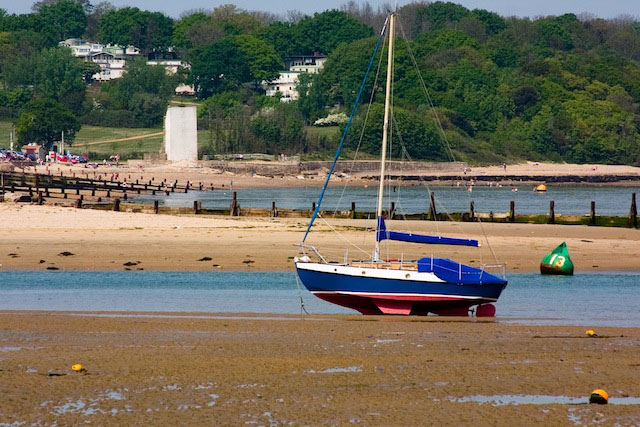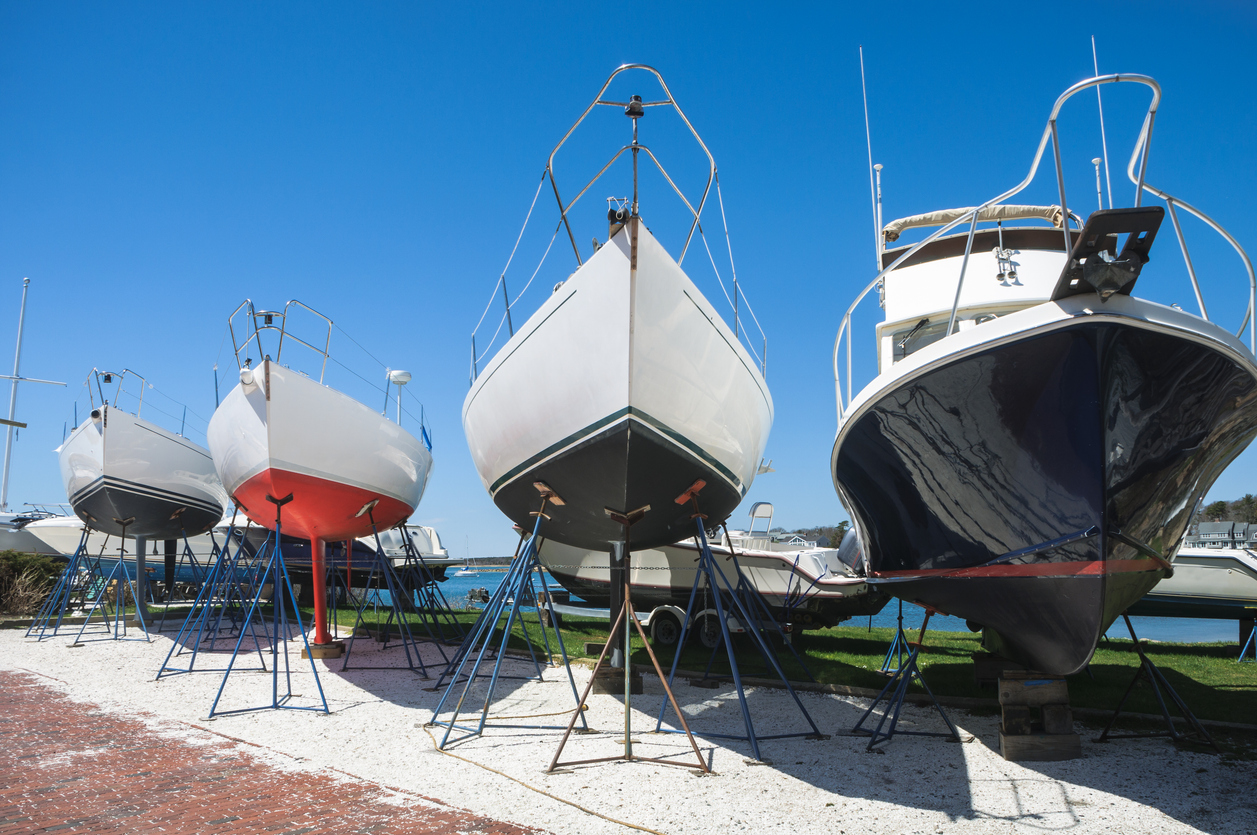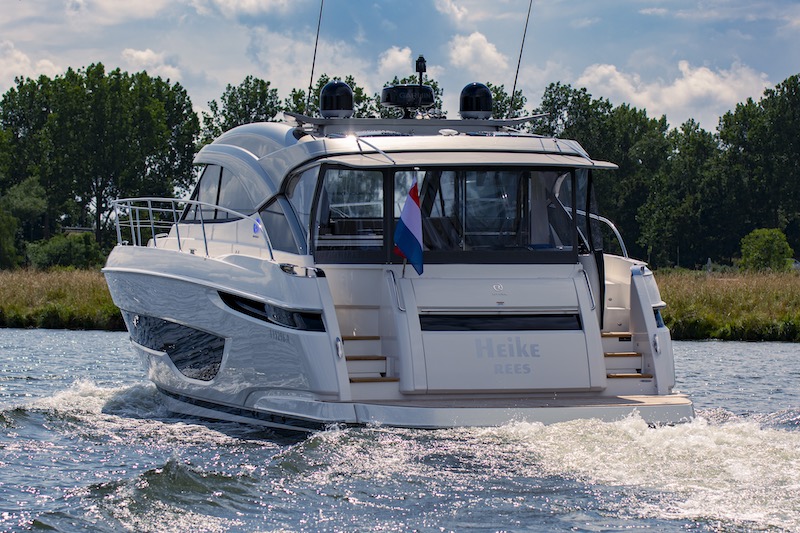So you know you want to buy a yacht (if you’re not totally clear, read Choosing a boat: which boat is right for me?), but the different keel shapes and designs can dramatically affect the performance and usability. So, what style should you go for: bilge keel or fin?
It is commonly known that bilge keel boats offer the benefits of shallow draught and the ability to dry out upright over low water; however, this can come at the expense of performance. But while many may take this as a straight-up trade – convenience vs performance – this is by no means the whole story. In fact, a well-designed twin keel boat can offer better performance than some single-keel yachts.
However, many of the early bilge keel designs were not efficient in any way. These tended to have very shallow keels that often had minimal aerofoil shaping and were attached to the boat vertically. Unsurprisingly, these boats did not sail well, especially to windward, although they tended to benefit from good directional stability – a factor that has long been valued in cruising boats.
The importance of (heeled) draught
It was only a short time before designers started to look for improvements. One of the first yachts to be tank tested, long before computer design tools enabled designers to gain a better understanding of their products, was the Macwester 27 in the early 1970s.
As a result of this testing, the new boat gained much deeper keels, with draught increasing from the 0.75m of the earlier Macwester 26 to 1.2m – a 60 per cent increase. Equally importantly, the keels of the new boat were splayed out at an angle of around 10 degrees from the vertical and were given an efficient aerofoil shape. The angle of the keel to the vertical means that when the boat heels, the leeward keel becomes almost vertical, making it more efficient at resisting leeway than a single keel at a large angle of heel.
Despite many similarities between the two boats, the sailing performance of the Macwester 27 was in a totally different league to the 26 and put a number of fin keel designs of the era to shame. We should perhaps consider the draught when the boat is heeled as a critical factor in minimising leeway. This hands an advantage to a twin keel boat with the same draught when static as a single keel one – the latter’s draught will reduce, whereas the twin keeler’s draught will increase.
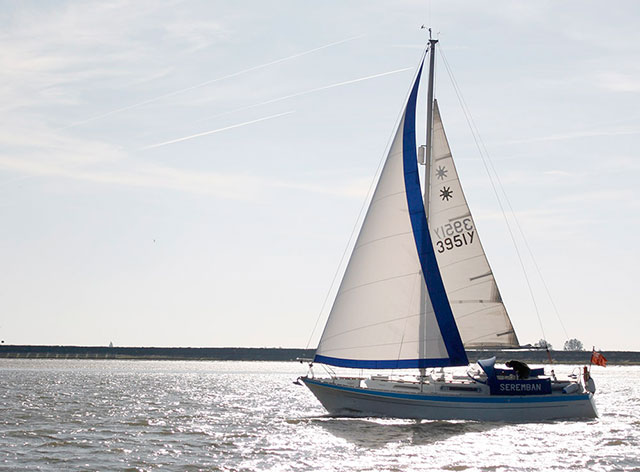
Keep an open mind about keel forms – you might be surprised at what the boat overtaking you has under the water.
Further refinements
Astute designers continued to work on the efficiency of bilge keels – there was massive demand for such boats, especially in the UK, throughout the 1970s and much of the 80s. A further refinement was to increase the angle of the keels from the vertical to around 20 degrees. This ensured one keel would be pointing directly downwards when sailing with the boat fully powered up, while the other would be almost breaking the surface, where it would both be reducing drag and where its weight would be most effective at increasing stability.
The 26-foot Westerly Griffon, designed by Ed Dubois in the early 1980s, for instance, can be seen with its windward keel popping out of the water in wave troughs when well-heeled. When sailing the boat, there is also a familiar tell-tale thud of water when a wave top hits the underside of the windward keel. In only a dozen years, the efficiency of bilge keels advanced enormously.
A further refinement was an asymmetric shape to the aerofoil section of the keel, such that the immersed keel would provide lift that would tend to ‘suck’ the boat up to windward. David Thomas’s designs for the UK Hunter Boats in the 1980s, 1990s, and 2000s were some of the most efficient bilge keelers produced. These had efficient, deep keels with a high ballast ratio and small bulbs on the bottom of each keel to keep weight as low as possible. Combined with an efficient rig, these boats were frequently faster than larger fin keel designs, yet retained the benefit of excellent directional stability seen on early bilge keel designs in the 1960s.
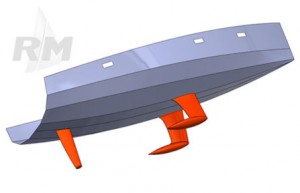
The RM1260, winner of the Family Cruiser category in the European Yacht of the Year awards in 2013, was one of the first new twin keel boats available.
Today, there are very few manufacturers of bilge keel yachts – there’s a sense in which they have fallen out of mainstream fashion, even though many of the later designs were efficient. However, the French RM range of 35-44ft yachts bucks this trend – all the company’s models have twin keels. With the RM1260 winning the Family Cruiser category in the European Yacht of the Year Awards at the 2013 Dusseldorf Boat Show, maybe other manufacturers will again start to look at twin keel options.
Fin keel advantages
So, what are the advantages of a well-designed single-keel boat over a twin-keel model? It becomes impractical to design a twin keel boat with a genuinely deep draught, so while a bilge keel vessel of moderate draught has the potential to outperform a sister ship with a single keel of equal draught, a deep keel variant will always be quicker.
In addition, a boat with a deep single keel will have less wetted surface area and, therefore, less drag than a twin keel model. This significantly affects performance in light weather, with the twin keeler at a disadvantage.
Would I buy a twin keel boat? Definitely, if it suited my priorities at the time and I could find a good one at a suitable price. However, many owners of later bilge keelers keep them for a long time, and those that do change hands often attract a premium price compared to similar fin keel boats. But perhaps this is a testament to how far bilge keel yachts have come over the years, especially in the UK, where shallow harbours and large tide discrepancies make the ability to stand unaided particularly useful.
It’s worth noting, however, that bilge keels and fin keels are not the only options for sailing vessels. So, if you’re not convinced that a twin keel design is right for you, why not look at our feature on 5 great lifting keel cruising yachts and 8 of the best bilge-keel sailing yachts? Or, if you’re ready to move onto the next step of your bilge-keel buying journey, check out 8 of the best bilge-keel sailing yachts.
For more useful boat-buying tips see How to choose the right weekend cruiser, Choosing the right family cruising boat and Boat surveys: an essential guide.
Editor’s note: This article was originally published by Rupert Holmes in May 2013, and updated by Pippa Shaw in June 2024.

